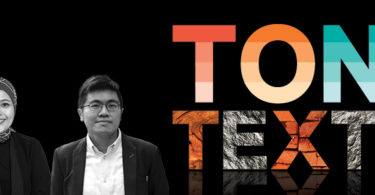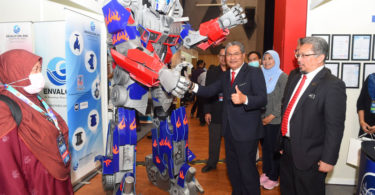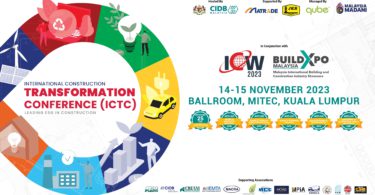In the International Built Environment Week (IBEW) 2020, on 29 September 2020, the panel discussion focused on how to build a stronger and more resilient Singapore built environment sector. Hugh Lim, CEO of Building and Construction Authority (BCA), mentioned that aside from granting support funds, BCA also aims to promote Design for Manufacture and Assembly (DfMA) to reduce the reliance on manual labour and provide a sandbox for innovation through the Built Environment Living Lab Framework.
BCA’S TOP PRIORITIES
According to Lim, BCA has been supporting the entire sector to wade through the circuit breaker period, as well as to restart safely. During the circuit breaker, the priority was to ensure that the projects stopped safely and that the workforce was protected. When construction works restarted, BCA enlisted the help from partners to work out the way to operate with COVID-19 in the background.
The pandemic has also made stakeholders recognise that the construction sector is heavily dependent on cashflow. The government had to provide considerable support. Thus far, the construction sector has been granted S$1.36 billion to ensure that companies have enough cashflow to keep going and retain jobs. Now that the economy is reopening and all projects have restarted, there has to be insurance that businesses can continue without interruptions due to new cases or outbreaks.
DESIGN FOR MANUFACTURE AND ASSEMBLY
Lim further explained how COVID-19 has revealed vulnerabilities that the industry players knew existed but did not fully acknowledge: the dependency on foreign workers. DfMA can distribute some of the construction works to factories, thus reducing the demand for on-site labour. In the Integrated Construction and Prefabrication Hub (ICPH), most processes have been automated too. All this will allow safe distancing measures to be kept in place because fewer workers are needed.
However, the success really depends on the market demands. In 2016, the adoption of DfMA was below 10 per cent. This year, COVID-19 notwithstanding, the adoption rate has been projected to reach 40 per cent. The leading developers’ capabilities and the familiarity have grown steadily too. They have begun to see the benefits of adopting DfMA, which include an increased on-site productivity and an improved quality of deliverables. The consumers could see such quality in the units constructed with DfMA and they appreciate the finishes.
Therefore, the companies that have embarked on this journey have gained the confidence. In the next two years, buildability standard will be raised and the economy of scale will be achieved, which will bring down premium costs. DfMA provides a way forward despite restrictions imposed on worksites.
Read: Building the future with prefabricated prefinished volumetric construction (PPVC)
THE BUILT ENVIRONMENT LIVING LAB FRAMEWORK
On 29 September 2020, Tan Kiat How, Minister of State in the Prime Minister’s Office and in the Ministry of National Development, launched the Built Environment Living Lab Framework (BE LLF) to facilitate test-bedding of innovative proposals in urban spaces and the living environment, such as at Punggol Town and Jurong Lake Gardens.
Commenting on this, Lim stated that BCA is aiming to bootstrap the innovation element of the sector in a targeted way and that BE LLF can supplement that. This initiative is to allow entrepreneurs and innovators to access what is perceived as a highly regulated environment because regulations, as Lim maintained, should not get in the way of implementing ideas coming on board.
A single company may be able to provide a testing facility, also commonly referred to as a sandbox, for new ideas and innovation, but the BE LLF aims to provide a lot more options including testing in a public building, housing estate and large development. This would allow innovation to be validated more thoroughly.
Innovators need testing to address problems and workability. In the past, when testing zero-energy buildings (ZEB) in the BCA campus, the validation was built up to see if the applicability is not only for low-rise building, but also medium and high-rise buildings. With such testing, the rest of the industry can tap on it and see if it actually yields results that can be incorporated into the rest of the sector.– Anisa Pinatih, Construction+ Online
Disclaimer: Construction+ makes reasonable efforts to present accurate and reliable information on this website, but the information is not intended to provide specific advice about individual legal, business, or other matters, and it is not a substitute for readers’ independent research and evaluation of any issue. If specific legal or other expert advice is required or desired, the services of an appropriate, competent professional should be sought. Construction+ makes no representations of any kind and disclaims all expressed, implied, statutory or other warranties of any kind, including, without limitation, any warranties of accuracy and timeliness of the measures and regulations; and the completeness of the projects mentioned in the articles. All measures, regulations and projects are accurate as of the date of publication; for further information, please refer to the sources cited.
Hyperlinks are not endorsements: Construction+ is in the business of promoting the interests of its readers as a whole and does not promote or endorse references to specific products, services or third-party content providers; nor are such links or references any indication that Construction+ has received specific authorisation to provide these links or references. Rather, the links on this website to other sites are provided solely to acknowledge them as content sources and as a convenient resource to readers of Construction+.











